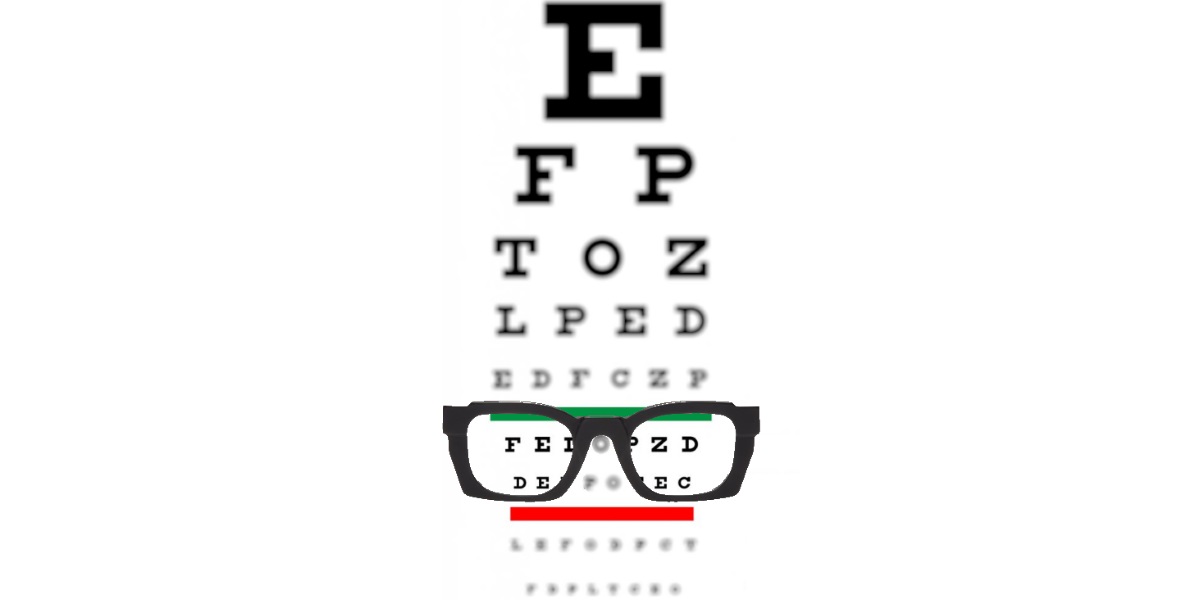The visit to the ophthalmologist is often accompanied by questions such as: Has my prescription changed? Is it serious? What is my sight problem? etc. However, you may not always take the time to ask all your questions. Aware of this, we have taken care to explain your visual issue below.
First of all, it is important to know that the eye is an optical system composed of two converging lenses (the cornea and the lens). The image of the object observed by the eye is positioned on the retina (the back of the eye) to be analyzed and processed by the brain. If the image is not perfectly positioned on the retina, vision will be blurry. It’s similar to a projector whose settings are off. The different sight problems are: myopia, hyperopia, astigmatism, and presbyopia.

Myopia:
If you are shortsighted, you may have noticed that your vision is blurry in the distance. The stronger your myopia, the blurrier your vision. A mild myopic with -0.50 sees slightly blurry at 2 meters, while a strong myopic with -8.00 sees blurry at 13 cm from their eyes. Myopia is corrected with a concave lens, thicker at the edge and very thin in the center. The power in diopters is noted with a negative sign.
It is the most common sight problem and it is estimated that about 50% of the population will suffer from myopia in 2050.
Your eye, being too long or too strong (it converges too much), prevents the image of the object you are looking at from forming on the retina. Growth and certain habits can cause myopia to increase each year, known as progressive myopia.
Here are our tips to try to slow the progression of myopia:
– From a young age, have your children spend as much time outdoors as possible. It’s not just about getting fresh air; it’s about making them look into the distance. Urban children are more shortsighted than rural children! – Have an orthoptic assessment. Sometimes myopia is the result of insufficient convergence, for example. This is not visible to the naked eye and may not cause any symptoms.
– Wear the correct prescription, neither too strong nor too weak.
– Equip glasses with MyoVision Ace lenses from Carl Zeiss Vision, Stellest lenses from Essilor or Miyosmart lenses from Hoya. A patented system helps slow down myopia in children under 14 years old.
– Wear hard contact lenses. They have been proven to slow the progression of myopia and can be worn from a very young age.
Hyperopia:
Your eye, being too short or not strong enough (it doesn’t converge enough), prevents the image of the object you are looking at from forming on the retina. Growth often reduces or even eliminates hyperopia. Hyperopia evolves very little in adulthood.
The eye has the ability to change the curvature of the lens to correct hyperopia, known as accommodation. It’s exactly like focusing a camera. Thus, hyperopia present from birth may only be discovered later (up to age 40), when the ability to accommodate decreases with age.
Hyperopia is corrected with a convex lens, thick in the center and thin at the edge. The power in diopters is noted with a positive sign on the prescription. The stronger the hyperopia, the greater the effort of accommodation. Your eye may not be able to fully compensate for the ametropia, causing visual fatigue, headaches, or strabismus.
Astigmatism:
It is mainly due to the deformation of the cornea: instead of being spherical like a football, it is slightly elongated like a rugby ball. Almost everyone is astigmatic due to the pressure exerted by the eyelids on the cornea, without necessarily requiring correction. Except in very rare pathological cases, astigmatism does not evolve after 4 years old. Astigmatism is noted in parentheses on the prescription and is corrected with toric lenses.
Presbyopia
As mentioned earlier, the lens can deform to focus in cases of hyperopia or to fix on a close object. Thus, the closer we look at an object, the more our lens has to bulge to see clearly. This is called accommodation. Around the age of 40, the functions of the lens are impaired. It loses its tone and starts to hinder near vision. It feels like your arms are too short! If you are presbyopic, we can offer you progressive, degressive, mid-distance or reading lenses.
Le mot de Frédéric et Charlotte : “if you wish we can test your vision and explain to you exatly anything you need to know”
Still have questions about your visual issue? Need clarification? Feel free to leave a comment below! Do you need glasses? Discover our selection of designer glasses!

